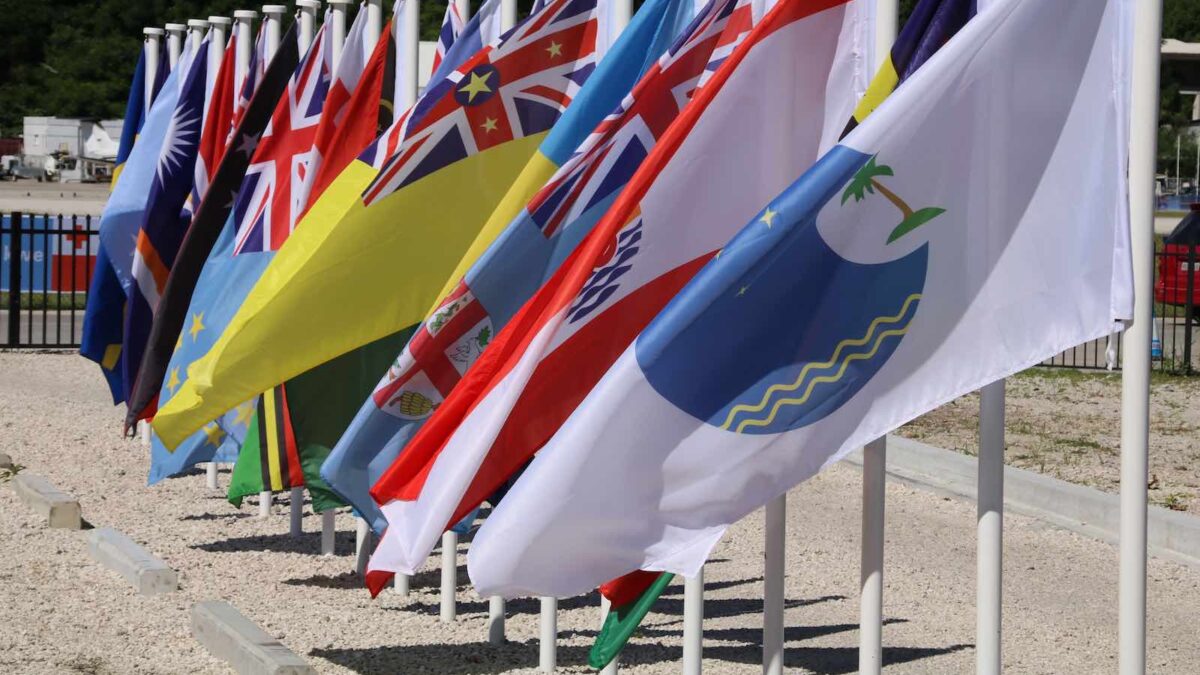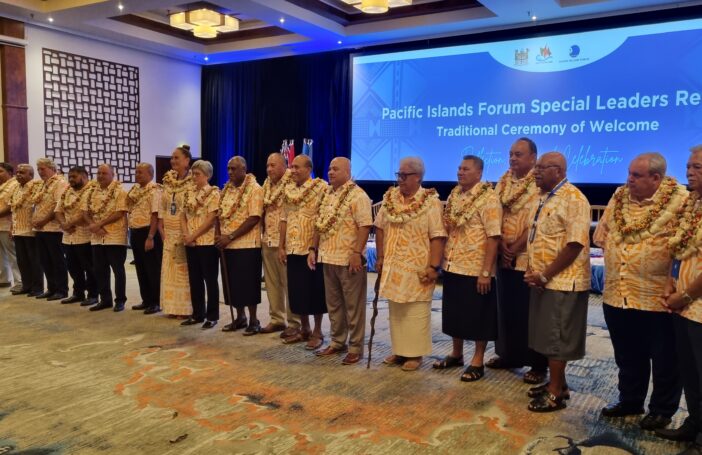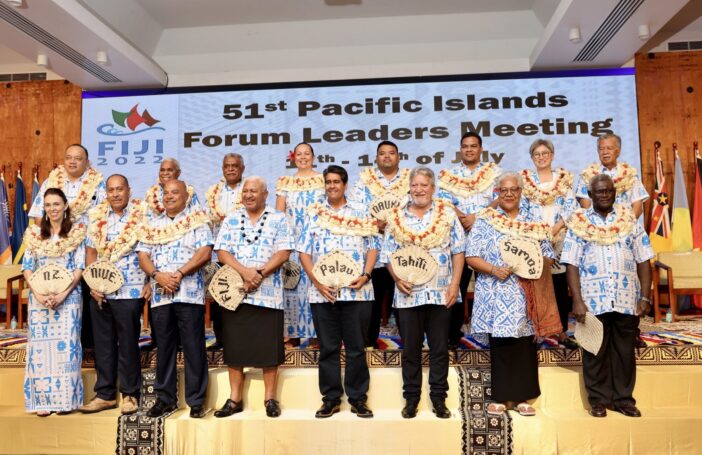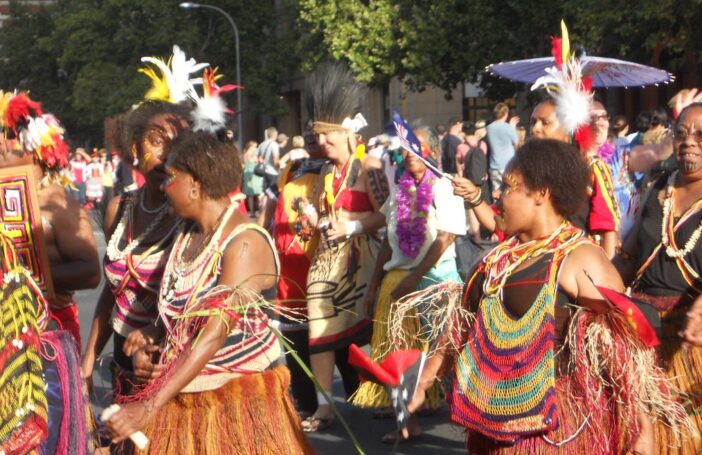As the Pacific island countries (PICs) prepare for another Pacific Islands Forum Economic Ministers Meeting (FEMM) next week, it is timely to ask how they are faring. Much of the regional picture does not look too good.
According to preliminary census findings, the Federated States of Micronesia (FSM) lost 30% of its population in the last intercensal period (2011-2021), and the Republic of the Marshall Islands lost 20%. Many other island populations have either been static or have declined outside of Melanesia over the same period. COVID-19 will have caused some to leave, but could the stagnation in population growth also be partly due to the lack of development and the resulting lack of social and economic opportunities? Are governments meeting their people’s needs and expectations?
Fijians work all over the Pacific, partly to replace nationals from other countries. Islanders are otherwise being replaced by workers from Bangladesh, Indonesia, Pakistan, the Philippines, and Turkey, among other countries, at extra expense and difficulty. At the same time, according to the ILO, high youth unemployment rates are a concern. “The share of youth who are not in education, employment, or training is at staggering levels in some Pacific island countries, with young women experiencing higher shares than men.”
What follows are generalisations, and there are exceptions that may suggest better policy.
If we first consider social indicators, according to the UNDP progress in the Human Development Index in the Pacific has been the slowest within the Asia-Pacific region, with only a 14 percentage point increase between 1990 and 2022. Levels of education and health have declined in some PICs, although education performance needs closer examination. The incidence and social and economic impact of non-communicable diseases is of particular concern throughout the region.
According to the World Bank’s Pacific Possible report, most PICs generated very modest rates of economic growth from 2005 to 2015. Indeed, most PIC economies have struggled to grow other than by mining their resources, increasing their dependence on economic rents, or receiving aid, including budget support.
What can be done to meet the needs and expectations of the people?
There has been no shortage of external attention and international assistance. This has largely focused on more visible “downstream” development projects, especially infrastructure and technical assistance. Less attention has been directed “upstream” to the status of policies and institutions which limit investment yields and growth.
Although there has recently been an increase in development partner interest in upstream PIC policies under Joint Policy Reform Matrices and policy-based loans and grants, this has not been guided by any growth and development framework and strategy debated and agreed between governments and development partners.
The ADB and the World Bank are the only development partners in the region that have independently assessed the performance of their public sector investments in the islands, and the Pacific region is the worst-performing of their developing country regions.
For some years, IMF Article IV staff reports have called for structural adjustment in favour of private sector-led growth in every mission to every PIC member country. However, the environment for private sector investment continues to be protective, deterring long-term, value-added investment and encouraging short-term, exploitative, and sometimes fraudulent, business. According to the ADB’s Country Performance Assessment of Structural Policy, the scores for this cluster have declined for seven of the 10 ADB member PICs that were rated in 2003 and 2022.
Land tenure regimes make it difficult for private investors to obtain land. Consequently, capital flows out of island economies in the absence of domestic collateral.
Businesses and governments all over the region repeatedly state they are increasingly short of employable labour as both skilled and unskilled workers migrate. They comment that the Australian and New Zealand seasonal worker schemes are making domestic labour markets worse. Fifty thousand to eighty thousand Fijian workers are reported to have emigrated over the past 18 months. The IMF Article IV report for Tonga in 2023 stated that supply-side constraints have hampered post-COVID reconstruction, “including labour shortages resulting from increased demand from seasonal worker programs in Australia and New Zealand”.
The PIC economies’ dependence on remittances, trust and sovereign wealth fund earnings, fish license fees, aid, and other rents makes domestic business in the PICs even more expensive and difficult.
Growth-constricting business rules and regulations prevail in most islands. State-owned enterprises continue to underperform and crowd out private-sector activity. Corruption, political instability, internal discord, and government ineffectiveness continue to deter development in some countries. This is exacerbated by certain foreign business practices. International efforts to curtail money laundering threaten correspondent banking and future commerce. The IMF estimates that PICs have lost half of their active correspondent banking relationships in the past 10 years.
Despite significant constraints, some in the private sector have successfully secured land, labour, and capital, overcoming unhelpful rules and regulations, and otherwise succeeding in a protective environment. This has led to some domestic growth and development; however, due to the poor business environment, the private sector’s contribution to GDP and employment in FSM, Palau, and the RMI has been relatively static between financial year 2003 and financial year 2022. Statistics for the private sector’s contributions to the economies of the other PICs are not available.
There are many specific exceptions to the above. Depending on stakeholders’ perspectives, some of the above factors will be subject to differing interpretations. Applying any policy prescriptions would have to allow for the fact that the islands differ. Epeli Hau’ofa’s essay, Our Sea of Islands, presented a timely, refreshing, and optimistic understanding of the Pacific islands in 1994, offering an alternative paradigm. Can we remain so optimistic 30 years later? What can be done to arrest this regional malaise? Can the 2024 FEMM revisit the region’s prevailing development paradigm and provide new directions?
Steve Pollard wrote a series of blogs between 2012-13 reflecting on his career as a regional economic adviser. Read the Pacific Reflections series on our blog or as compiled into a Development Policy Centre Discussion Paper.





Thanks Steve.
Succinct and factual.
From where I sit I conclude that the 2020 lock downs, the war on terrorism starting on Sept 11th 2002 and frequent natural disasters have compounded to make “survival” the imperative.
Restrictions of fund flows is killing Private Sector Investment. Travel restrictions from COVID19 prohibited return of Seasonal Workers thereby challenging families and communities. Disruptions caused by frequent cyclones,volcanoes, quakes and waves challenge livelihood.
The next big challenge is the nuclear issue of Fukushima heavy water release and threat if nuclear annihilation.
Only through prayer can we smile and be at peace.